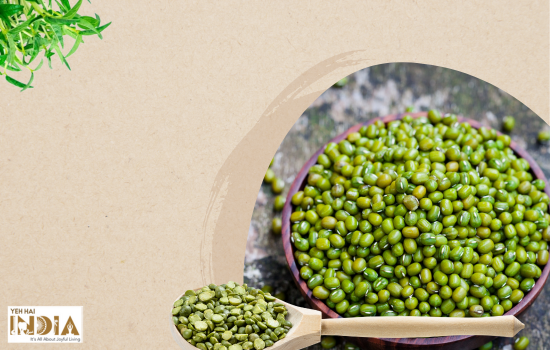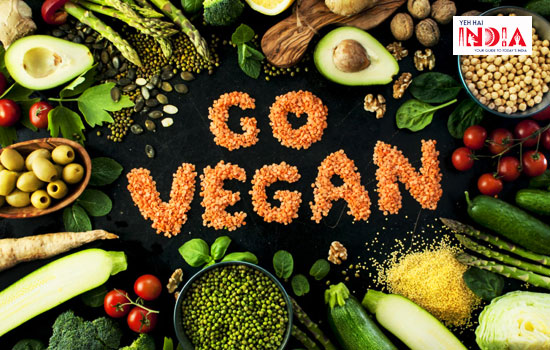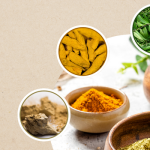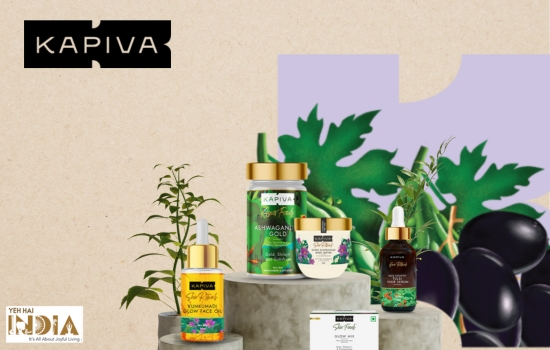Let’s talk about the superstar of legumes- Moong Dal! Known as the “poor man’s meat,” this tiny bean is packed with protein, vitamins, minerals, and bioactive compounds. It’s a staple in many Asian countries, including India, Pakistan, and Bangladesh, and it’s even grown in some dry regions of Europe and the US of A!
Not only is Moong nutritious on its own, but it’s also a great partner for cereals, boosting the protein quality of the combo. And the benefits don’t stop there! According to ancient Chinese medicine, Moong Dal is fantastic for tummy troubles and for keeping your skin soft and supple.
Did you know that there are two varieties of moong? That’s right! There’s the green moong dal (also called the green gram), split with skin, and the yellow moong dal. Although they may seem similar, their nutritional values differ.
Nutrition Values: Green vs Yellow Moong Dal
Moong dal is loaded with protein, fibre, vitamins, and minerals, making it an excellent choice for weight loss and management. This legume’s high-fibre content aids in digestion and promotes regularity, while its low-fat and calorie count makes it an ideal option for those looking to shed some pounds. Plus, its antioxidant content can reduce inflammation in the body and improve overall health, all while satisfying your taste buds!
Green moong is higher in fibre, with 18.06 grams compared to yellow moong dal’s 8.2 grams. However, yellow moong contains more fat at 1.2 grams, while green moong has only 0.61 grams. Both are excellent sources of protein, with green moong having 25.73 grams and yellow moong having 24.5 grams.
Overall, both types of moong dal are fantastic sources of essential nutrients. Whether you prefer the green or yellow variety, adding moong to your diet is an easy way to incorporate more protein, fibre, and other important vitamins and minerals into your meals.
Recommended Article: How to Reduce Bloating? 5 Herbs and Spices to Rescue You
Want to know how much nutrition required per day can be obtained from just a cup (200 g) of boiled moong dal? You get about 212 calories from one cup of boiled moong.
Major Nutrients
- Carbohydrates: 38.7 grams
- Fibre: 15.4 grams
- Proteins: 14.2 grams
- Fats: 0.8 grams
Other Important Nutrients
- Iron: 16% of RDI
- Folate (B9): 80% of RDI
- Potassium: 15% of RDI
- Phosphorus: 20% of RDI
- Manganese: 30% of RDI
- Magnesium: 24% of RDI
- Copper: 16% of RDI
- Zinc: 11% of RDI
- Vitamin B1: 22% of RDI
- Vitamins B2, B3, B5, B6, C and selenium are also present.
Moong Sprouts
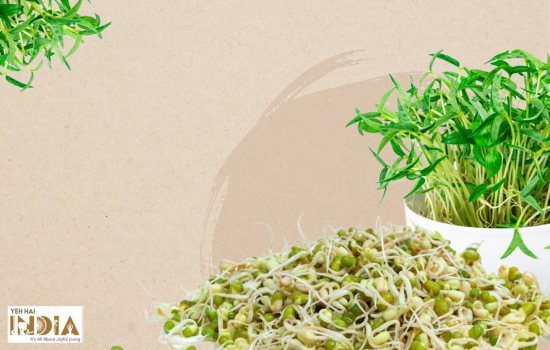
Sprouting moong beans leads to an increase in the nutritional value naturally. These are also the most commonly sprouted beans used in South Asian and Indian cuisines. Naturally-sprouted moong beans contain about 15% of the daily value of vitamin C. This is approximately 7 to 24 times more than what is present in moong normally. Sprouting also increases the flavonoids and other antioxidants which benefits our health overall.
Nutrition of Moong Sprouts
- Calories: 31 per 100 g
- Carbohydrates: 6 grams
- Proteins: 3 grams
- Vitamin C: 15% of the DV
- Folates: 16% of the DV
- Iron: 5% of the DV
Health Benefits of Moong Dal
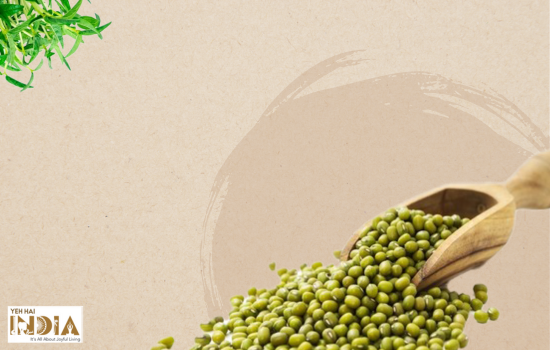
Moong Dal is a staple in many Indian dishes, from sweet moong dal halwa to savoury khichdi. But moong dal isn’t just a delicious ingredient – it’s also incredibly healthy! Here are some of the top reasons why moong dal is an excellent addition to your diet:
1. Packed with Proteins
Get your protein power from moong! It’s a must-have for all the vegetarians and vegans out there. Mix it with rice, and you’ve got yourself a top-notch protein source that won’t break the bank.
In fact, studies have shown that consuming moong with rice in a ratio of 3:4 can aid in the absorption of good-quality protein. And for those who can’t afford animal protein, mung beans are both a cost-effective and efficient source of protein. So, next time you’re looking for a plant-based protein source, don’t forget about the mighty moong dal!
2. Antioxidants in Abundance
This superfood is packed with peptides, and phenolic acids that work together to lower your risk of breast and colon cancer. Moong dal’s cancer-fighting properties are attributed to its high concentration of antioxidants such as phenolic acids and flavonoids.
These compounds help to reduce oxidative stress and cellular damage, thereby reducing the risk of chronic diseases, including cancer. Studies have shown that moong consumption can inhibit the growth and proliferation of cancer cells in vitro, indicating its potential as a natural anti-cancer agent.
Recommended Article: Best Green Tea Brands in India To Sip Your Way to Better Health
3. A Fibre-Rich Boon for Digestive Health
Moong dal is a great option for those who have sensitive stomachs or suffer from digestive issues. The high fibre content in moong also helps keep the digestive system healthy and regular, promoting overall gut health.
Moong is a belly-friendly food that goes easy on your digestive system. It’s often served to those who are ill or older because it’s so easy to digest. Unlike other types of dal, it won’t leave you feeling bloated or gassy.
4. Nutrients That Lower Blood Sugar Levels
Moong dal could be a hero for those concerned about high blood sugar levels. It has been found to have hypoglycemic properties, meaning it could help reduce blood sugar levels. This makes it a smart choice for people with diabetes or those who are at risk of developing diabetes. By including moong in your diet, you could help control your blood sugar and improve your overall health.
Studies have shown that moong may help regulate blood sugar levels by slowing down the absorption of carbohydrates in the digestive system. This is because it contains high amounts of dietary fibre, which can also promote feelings of fullness and aid in weight management.
However, it’s important to consult with a healthcare professional before making any significant changes to your diet if you have diabetes.
5. A Shield Against Chronic Diseases
Moong dal is a superfood that’s loaded with antioxidants. These little warriors help your body fight off chronic diseases like heart disease, diabetes, and cancer. So, if you’re looking to improve your overall health and reduce your risk of these diseases, moong dal should be an important part of that quest.
Moong dal’s antioxidants can help neutralize harmful free radicals in the body, protecting against oxidative stress and inflammation. This can lead to improved overall health and a reduced risk of developing chronic diseases in the future. Incorporating moong dal into your diet is an easy and delicious way to take care of your health.
6. Lowers Bad Cholesterol & Checks Heart Diseases At The Door
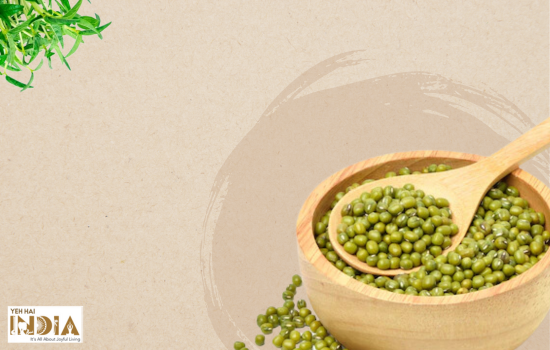
Moong dal is a heart-healthy food that can help protect your ticker! By consuming it, you can lower your risk of heart disease by reducing your plasma lipid levels. The antioxidants in moong dal have been proven to lower LDL cholesterol in the blood. Additionally, the dietary fibre in moong dal may also help to lower cholesterol levels, further promoting heart health.
7. Manages Blood Pressure Levels
High blood pressure among Indians has become a very common problem. Diet plays an important role in managing high blood pressure levels. Moong dal, rich in potassium, magnesium and fibre, helps lower blood pressure and reduce the risk of heart disease.
Recommended Article: 7 Best Natural Cold-Pressed Oils for Daily Cooking
8. Helps Improve Liver Function
Moong dal is a liver saviour! Research suggests that both whole and sprouted moong can shield your liver from harm and keep it healthy. Plus, they may help ward off the dreaded fatty liver disease.
In addition, moong dal is rich in fibre, which is beneficial for maintaining liver health. Fibre helps reduce the buildup of toxins and waste products in the liver, improving its function and preventing damage. Eating moong as part of a balanced diet may help support liver health and prevent liver-related diseases.
9. Controls Hunger Pangs
Moong is not only healthy but also high in fibre, perfect for shedding some pounds. The nutrient-packed food keeps hunger at bay and keeps you feeling full. This avoids the snack-craving between meals and aids in weight loss. It also has a fantastic amino acid balance that can help your muscles grow.
Frequently Asked Questions
1. What is moong dal, and how do I cook it?
Moong dal is a type of split lentil that is commonly used in Indian cuisine. To cook it, rinse it well, add water, and bring it to a boil. Once boiling, reduce the heat and simmer until the dal is soft and tender. You can use it in a variety of dishes, from soups and stews to curries and salads.
2. What are the health benefits of moong dal?
Moong dal is loaded with protein, fibre, vitamins, and minerals, making it an excellent choice for weight loss and management. Its high fibre content aids in digestion and promotes regularity, while its low-fat and calorie count makes it an ideal option for those looking to shed some pounds. Moong dal is also a great source of antioxidants and may have cancer-fighting and blood sugar-regulating properties.
3. Is moong dal suitable for vegetarians and vegans?
Yes! Moong dal is a fantastic source of plant-based protein, making it an ideal choice for vegetarians and vegans. It’s also an excellent option for those who can’t afford animal protein, as it is both cost-effective and efficient.
4. Can moong dal cause any side effects?
While moong dal is generally considered safe and well-tolerated, some people may experience gas or bloating after consuming it, especially if they are not used to consuming high-fibre foods. It’s always a good idea to start with small portions and gradually increase your intake to see how your body reacts.
5. Where can I buy moong dal?
Moong dal is widely available in Asian grocery stores and online retailers. You can find it in whole and split varieties, with or without the skin. Look for organic and non-GMO options for the best quality.
Moong Dal is both tasty and healthy. It’s a superfood that has many benefits for your body. This legume can help with digestion and keep your heart healthy. Adding Moong Dal to your diet is a great idea. You can try out different recipes to enjoy their benefits. Don’t hesitate to try and see how it can improve your health.
Recommended Article: Quinoa: A much healthier alternative to rice


